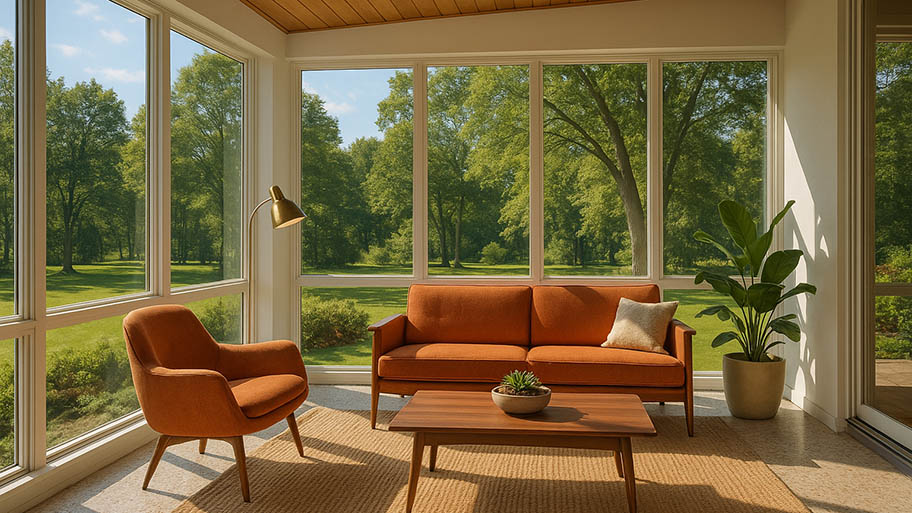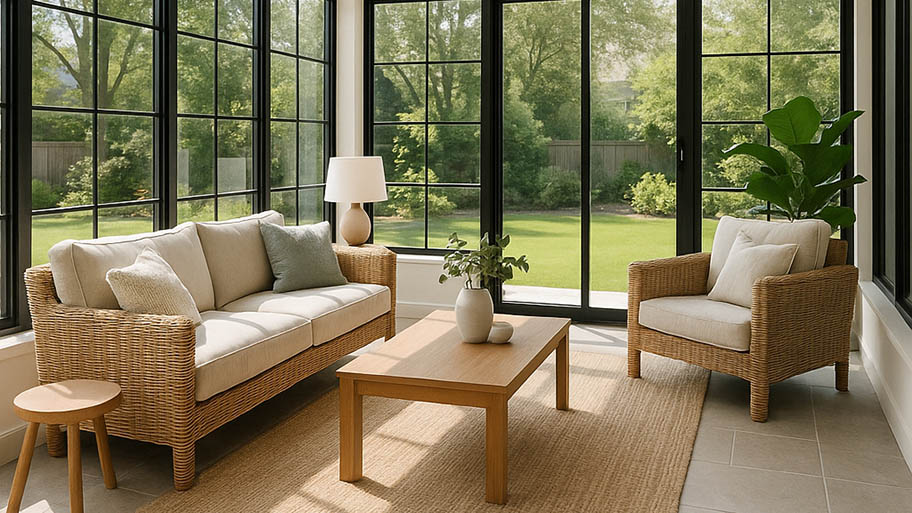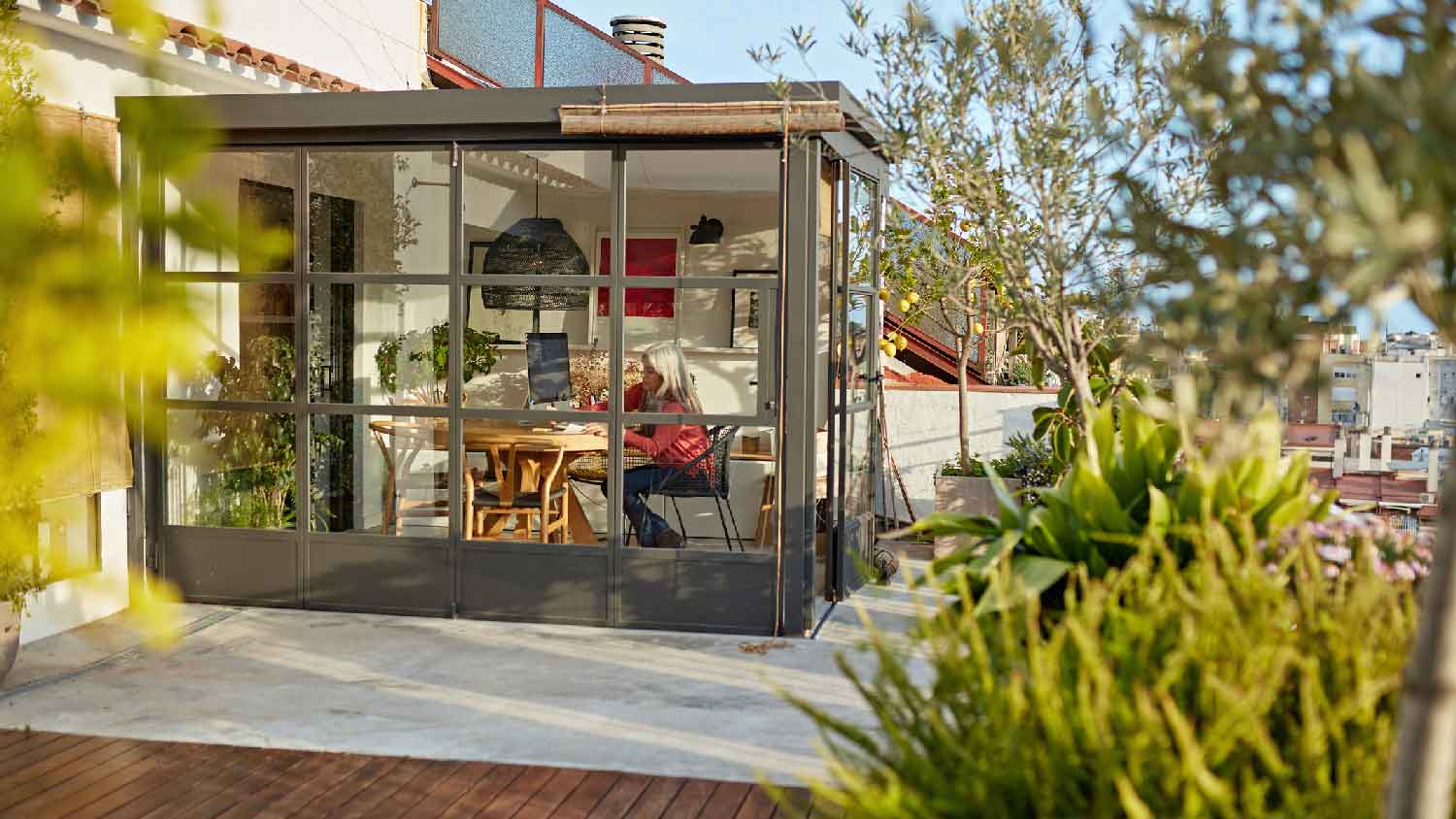
Considering adding a screened porch to your home? Discover the average cost of a screened-in porch, depending on its size, location, and more.
Let’s be transparent about the details of this indoor/outdoor feature


Screened-in porches offer fresh air and extra living space and keep the bugs at bay.
They require regular maintenance and aren’t suited for year-round use.
Consider factors like screen type, location, and functionality to build a porch that fits your needs.
There’s something idyllic about enjoying the weather of an early summer morning with a cup of coffee or a spring afternoon listening to the sounds of nature, all while being protected from bugs, direct sun, and yard debris. A screened-in porch allows you to enjoy the weather without the annoyances the outdoors can sometimes bring, but like any home feature, it has both benefits and drawbacks. We explore the advantages and problems with screened-in porches, so you can decide if it’s right for your home.
A screened-in porch is a porch attached to the home, usually at the front, that is enclosed by mesh panels, allowing for airflow and a semi-protected indoor/outdoor space. There’s a range of types of screens for porches, including fiberglass, aluminum, and stainless steel, mounted on frames of varying materials. Screened-in porches often have floors made of wood, composite, or other outdoor materials, and many homeowners decorate with outdoor furniture to make a seating or dining area.
| Pros | Cons |
|---|---|
| Keeps bugs and debris out | Can't be used year-round |
| Protects porch materials furniture | High-maintenance |
| Adds usable living space | Obstructed views |
| Increases curb appeal | Initial cost |
For many homeowners, a screened-in porch is an appealing amenity that allows better use of outdoor spaces. Here are some of the benefits of a screened-in porch
Spending time outdoors can mean dealing with pesky bugs and yard debris. A screened-in porch protects you from annoying insects and your porch from leaves, grass clippings, and other debris.
Exposure to the elements can take its toll on your porch materials, furniture, and decor. A screened-in porch can protect against faded upholstery, damaged flooring, and evidence of critters making themselves at home.
Screened-in porches are versatile spaces, allowing you to create a relaxing seating oasis or a place to dine and entertain. Adding amenities like outdoor-rated ceiling fans, speaker systems, or a wall-mounted TV can make the space more comfortable.
A well-built, well-decorated screened-in porch can add to your home’s curb appeal, which can help your home be more attractive to potential buyers when it comes time to sell. Keeping your porch clean and well-maintained adds to your home’s visual appeal.
Depending on where you live, a screened-in porch is only usable for part of the year. In colder climates, winter temperatures keep you fully indoors, and in hotter areas, the peak summer heat makes it uncomfortable to be outside.
While a screened-in porch offers limited protection from the elements, screens and frames must be regularly cleaned and maintained. Torn screens won’t keep the bugs out, and dirt and pollen can accumulate as the wind blows them around.
Adding frames and screens to a porch will limit the unobstructed view that an open porch provides. High-quality screens that offer minimal obstruction will cost more, but may be worth it so you can more fully appreciate the scenery and not have any screened porch regrets.
A screened-in porch costs an average of $2,000 to $4,000 to screen in an existing porch, but costs can climb to $22,000 or more if you’re building a screened-in porch from scratch. Adding a porch is easier on the budget than other home addition costs, but the initial cost may be prohibitive, and you may need a permit for a screened-in porch, which adds costs and time to the project.
If you want to enjoy added natural light and an indoor/outdoor living experience, you have options. Some alternatives to a screened-in porch include:
A Florida room or three-season room
A four-season sunroom
A solarium or conservatory
A screened-in gazebo or pergola
If you like the idea of a protected outdoor space and don’t have room in the budget or a sunroom addition, a screened-in porch can be the perfect choice. Take inspiration from a range of screened-in porch ideas to customize your space and make a comfortable, relaxing indoor/outdoor space. A local sunroom contractor can help make your dream screened-in porch a reality—a pro who builds screened-in porches will provide a high-quality, well-built space you’ll enjoy for years to come.
From average costs to expert advice, get all the answers you need to get your job done.

Considering adding a screened porch to your home? Discover the average cost of a screened-in porch, depending on its size, location, and more.

Homeowners can enclose their porches in a few different ways—each having their own price tag. Learn what contributes to the total cost to enclose a porch and how you can reduce the bill.

When you're ready to kick back and enjoy nature without the bugs, a sunroom is your best option. Learn how much a sunroom addition costs to set your budget.

Not sure if you’d prefer a sunroom vs. a screened porch? Use this comprehensive guide to help you decide which you’d get more value from in the long run.

When it comes to a screened-in porch versus a 3-season room, there are some key differences. Learn about the costs and uses of each type of sunroom.

Enjoy the outdoors without being exposed to the elements with an Arizona room. Learn what an Arizona room is and why it may be a great addition to your home.